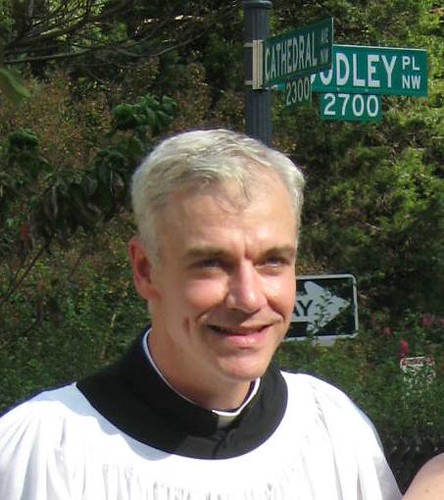Doing Gratitude

A sermon for Thanksgiving Day. The lectionary readings are Deuteronomy 8:7-18, Psalm 65, 2 Corinthians 9:6-15, and Luke 17:11-19.
For me, today’s Gospel is easy to imagine. It’s vivid. It has strong characters. Jesus is healing. The disciples are not getting in the way. The religious authorities are not trying to control him. And in this short story, some of Mary’s song is being enacted, “great things are being done, mercy is shown, strength is shared, the lowly are being lifted up, those hungry for healing are filled with good things, and God is coming with holy help.” It’s a good day on the way to Jerusalem.
But it’s not a perfect day.
Jesus sees the lepers, but rather than heal them and be done with it, Jesus shares the power of healing. “Go and show yourselves to the priests.” Jesus knows the larger social context well. He knows that without the official sanction of the temple, the community will not fully accept the lepers back in. So the lepers go away. And one returns.
He turns back to Jesus, praises God with a loud voice, falls at Jesus’ feet and thanks him. He is a foreigner, being both a leper and a Samaritan this man is a kind of “double winner,” really. Twice outcast. So perhaps from his vantage point, the healing seemed even more of a miracle. But for whatever reason, the one healed leper returns to give thanks.
As much as I like this story, when I begin to think about where I might have been in the story, or where I might be, I don’t like it as much. Maybe you would have been that one leper to return, but I doubt that I would have been. I might have gone by the temple to check in with the priests, but I think I would have been so excited, so renewed, so strengthened by the change, that I would have simply gotten back with life as I remembered it, or as I hoped it might be. I would have plans. I would have hopes. I would have an agenda—all of which would have been put on hold by the leprosy. So the minute it’s lifted, it would have “show time” for me. It would be back-to-action. It would be back-to-life, in many ways. My feelings of joy and health, and gratitude, would probably not have taken me to the feet of Jesus, but would have taken me somewhere else.
Part of the problem, for me, anyway, is that I’ve often thought of gratitude as a feeling, or an emotion. Our society has encouraged us to express our feelings and show emotion. But where does that leave us when our feelings may point us in the wrong direction? Feelings are flakey. My feelings cannot always be trusted—sometimes they are completely off base. Sometimes they are not rooted in reality.
A friend of mine recently put the theme of this day very bluntly. “Gratitude is about doing something.” Gratitude may sometimes come, and sometimes go, with a feeling. But real gratitude has to do with action, with doing something, with moving outside myself toward another.
Monday’s New York Times had a good little article about the effects of living with gratitude. Not so much feeling grateful, but living with gratitude—sometimes different things. The author, John Tierney, suggests that practicing gratitude is “linked to better health, sounder sleep, less anxiety and depression, higher long-term satisfaction with life and kinder behavior toward others, including romantic partners.” Give thanks to God. Live longer and love better. Happy Thanksgiving!
The article suggests a few things that some of you probably already do. It suggests that if you’re down in the dumps or are facing some kind of problem, try jotting down five things for which you’re grateful. Just put one sentence for each thing. If you just do this once a week, over, a few months, you’ll see a change.
Other practices can be helpful.
Don’t confuse gratitude with indebtedness. Even though I may be grateful to one person, simply letting gratitude soak into my left and turning it outward will affect others, and me.
Make a gratitude visit. Think of a person to whom you’re grateful. Think about what you might say to the person. And then visit him or her in person, and tell them what you’ve been thinking.
As kind of emergency gratitude approach, a gratitude triage or sorts, Tierney suggests thinking of how things could be worse.
When your relatives force you to look at photos on their phones, be thankful they no longer have access to a slide projector. When your aunt expounds on politics, rejoice inwardly that she does not hold elected office. Instead of focusing on the dry, tasteless turkey on your plate, be grateful the six-hour roasting process killed any toxic bacteria.
But gratitude is “doing something.” It may be not speaking. It may be helping someone else. It may be sending a note or making a call. It may be giving away something—something big like money or clothing or a car, or it may mean something smaller, like giving away one’s need to be right, giving away one’s temporary comfort, giving away one’s pride.
Ten lepers are healed. Nine go their own way. But one returns to Jesus, says thank you to the source of his healing, to the source of all creation and life. And Jesus then sends him out, to live out his gratitude.
May God accept our thanksgiving, and show us how to be grateful and do something.
In the name of the Father, and of the Son, and of the Holy Ghost. Amen.


No comments:
Post a Comment